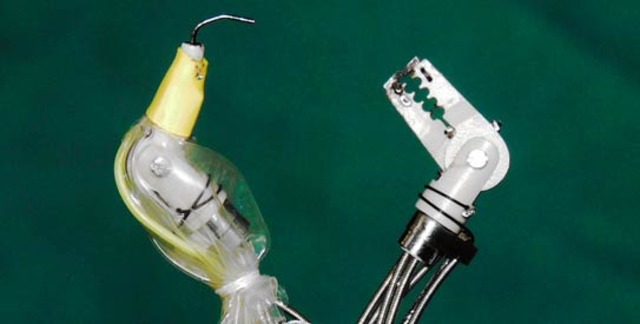Scientists Develop Crab-Like Robot To Remove Stomach Cancer

Scientists have designed and created a miniature crab-like robot - complete with pincers and hook - that can remove early-stage stomach cancers without leaving any scars. With the help of the robot, like-for-like surgery time is cut significantly, while its use is also said to reduce much of the risk typically associated with keyhole surgery, where the risk of infection is much higher.
Said to be inspired by Singapore’s famous chilli crab dish (and suggested by top Hong Kong surgeon Sydney Chung), the robot crustacean uses its pincer to hold cancerous tissues and a hook that slices them off and coagulates blood to stop the bleeding. Mounted on an endoscope, it enters the patient’s gut through the mouth and is literally ‘driven’ around the body by the surgeon who can see its movements thanks to the tiny camera attached to the endoscope. The robot is the work of Lawrence Ho, who works at Singapore’s National University Hospital, and Louis Phee, associate professor at Singapore’s Nanyang Technological University’s school of mechanical and aerospace engineering. Professor Ho said, “Our movements are very huge and if you want to make very fine movements, your hands will tremble…But robots can execute very fine movements without trembling.”
“Many things are a certain way because they have evolved and adapted to certain functions…we created something that followed the human anatomy and borrowed ideas from nature and incorporated the two,” said Professor Ho, who has so far used the robot to help remove early-stage stomach cancers from five different patients in India and Hong Kong. The team hopes to make the robot commercially available in three years.

